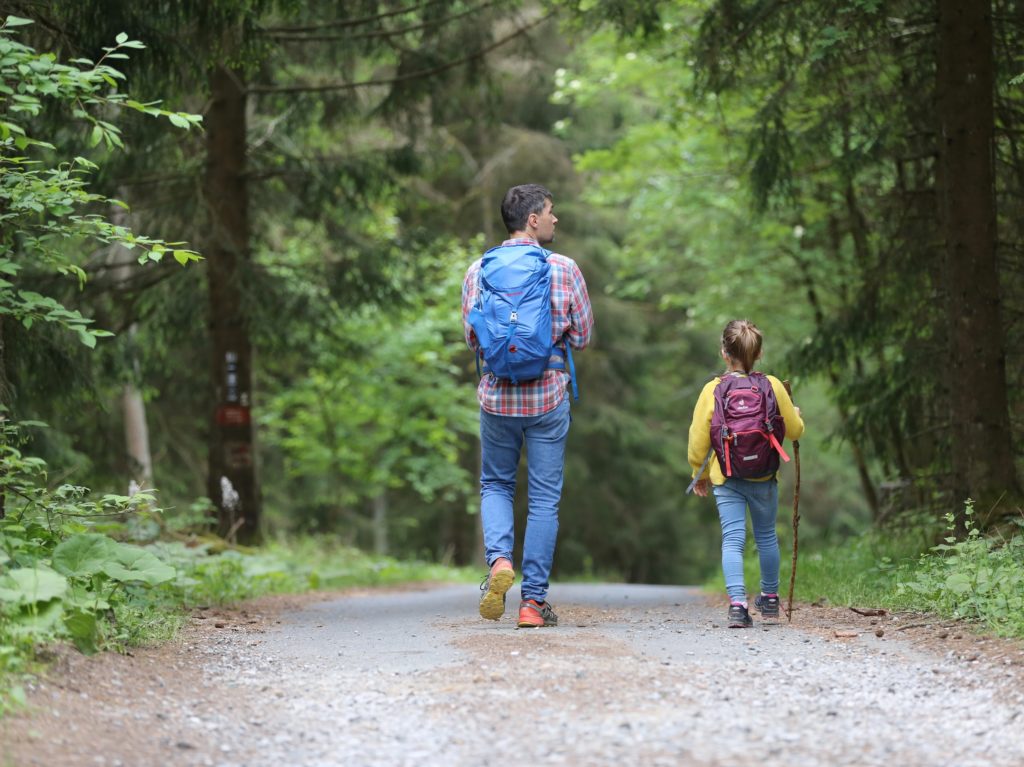
People, just like you, are walking in parks, mountains, plains, and cities all over the world in order to explore their world one step at a time. They are discovering that the slower pace of walking encourages them to relax and think, to enjoy the company of others, and to appreciate their environment. This is hiking.
Hiking provides a great introduction to outdoor activities for your family. It is one of our favorite forms of exercise and one of the best ways to experience a new place. It also gives everyone a lot of opportunities to practice the basic skills you’ll need for more advanced outdoor adventures.
For instance, it allows you to try out equipment in a relatively safe and controlled manner. By doing some day hiking, you can learn about the best equipment to bring into the backcountry on longer trips. You’ll learn how to use and care for your gear, and what sort of gear works best for your family as individuals. You’ll also learn what is absolutely critical to bring – and just as importantly – which gear can be left behind.
Even the simplest of hikes will help you learn essential backcountry skills like navigation, weather, safety, and wildlife habits. Hiking is a great method to develop confidence for more challenging excursions.
Let’s look at some of the basics of hiking. Starting with…
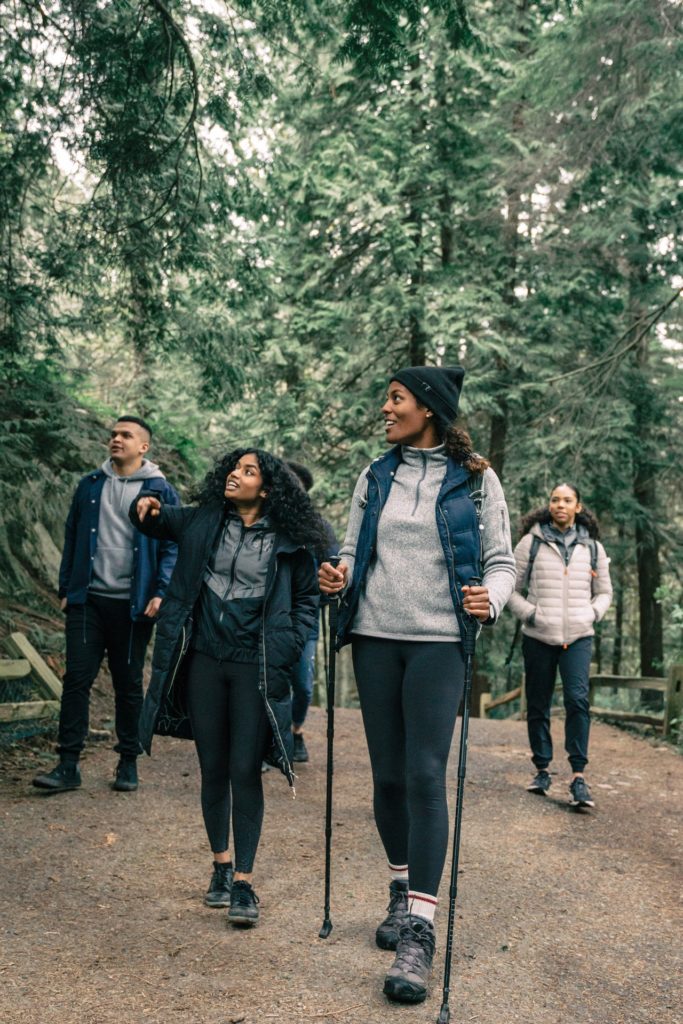
Where to Hike as a Family
Parks and forests are the most popular hiking destinations for families, but don’t limit yourself. Lots of places close to home can provide hours of simple walking. Beaches, pastures, and woodlands are all great choices. Even city sidewalks are like concrete trails through skyscraper canyons.
Make your hike more enjoyable. Include stunning vistas and landmarks (both natural and historic) on your route. And try to do a circular route so that you end up where you started and don’t need to worry about transportation back to your starting point.
If your trip goes across private lands, make sure to contact the owners first to get permission.
And always let someone know where you are going and when you expect to return.
Lastly, if you’d like to share your hike, post your hikes on All Trails so others can enjoy them too!
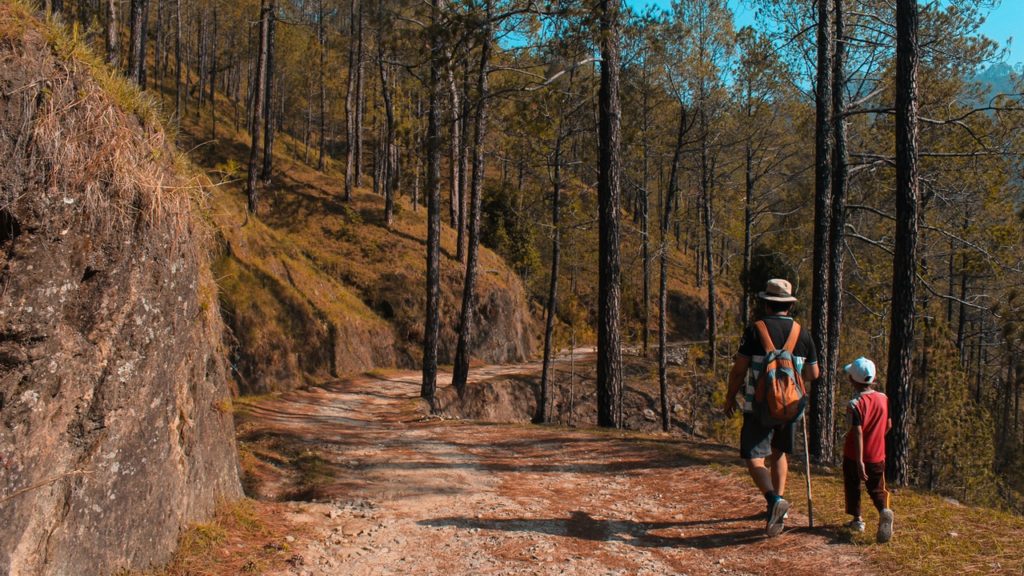
How Far Can a Family Hike Together?
A general rule is an average adult beginning hiker can walk about 2.5 to 3.5 miles an hour on level trails. Over the course of an 8 hour day hike, this would be a range of 20 to 28 miles. As for kids, at about 6 years of age, they can walk about 2 miles an hour at a consistent pace and about a 1/2 mile per day for each year of age. So an 8-year-old should be able to walk 4 miles a day, a 12-year-old can walk 6 miles a day, and so on. Always plan your hikes around the abilities of the youngest or least-abled hiker.
A good rule of thumb for planning hikes across hilly terrain is to apply Naismith’s Rule, which says to allow one hour for every 3 miles, plus an hour for every 2000 feet of ascent. William W. Naismith is not known to generally travel with kids, so again, adjust downward depending on the age of your kids.
The distance you actually can cover depends on the terrain, your family’s physical condition, and your reasons for hiking. Hiking is one of the best all-around exercises for your family. It works your heart and lungs – and toughens up the thighs and calves. A good strenuous hike will strengthen your entire core. But you don’t have to be an ultra-athlete in order to go hiking. Just focus on being healthy and getting out there.
If you or a family member are REALLY out of shape, don’t start too fast or push yourself beyond your limits. Start by walking around the block after breakfast, if that’s what it takes for you to feel comfortable with the activity – and build up endurance slowly.
Experienced hikers in peak condition can cover extraordinary distances over the course of a day. Though, some may become so interested in what they see that they’re satisfied to just amble along for a couple of easy miles in the middle of it.
Before determining the length of a hike, make sure to look at all of the conditions. Is the country rugged? Is your family lean and strong – or a little out of shape? Do you walk with a fast steady stride or a really easy pace with frequent stops to study flowers, watch wildlife, and take photographs?
When you begin, on your first hike, walk about four miles and then and see how you feel. If the hike has been an enjoyable experience and you don’t feel exhausted you’ll want to do more hikes.
If you come home weary and sore then try a shorter distance next time. Don’t worry about the distance, you can build up your endurance for longer hikes. The human body has an amazing capacity for building up endurance quickly.
But if you’re fit and rested then you’ll know you can add a few miles to your next few outings. Gradually getting to a hiking goal that you’ll be happy with.
However, the total distance is not nearly as important as what you experience along the way. A good hike should be a little tiring, but ultimately should be enjoyable and not a race against time.
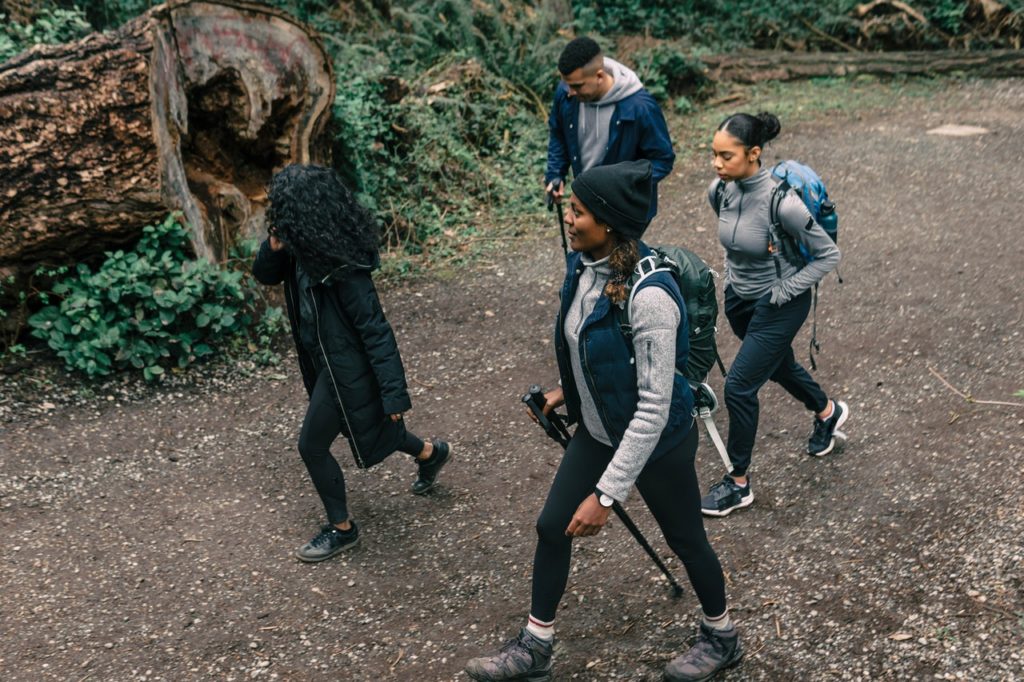
Hiking With Family
When travelling as a family put certain responsibilities upon all the members. Each must do everything possible to help the others have a safe enjoyable walk. No one should be left behind or made to feel unwanted.
The leader of the hike should go at a smooth and even pace so that everyone can maintain the speed. And don’t forget to stop occasionally. This allows the other hikers to adjust their clothing and gear, have a bite to eat, drink some water and take in the scenery.
The Hiking Mindset
When hiking as a family, keep your spirits up even when the rains fall, your legs ache, and you have miles left to go. Cheerfulness is infectious and if you help your family overcome the adversities of the trail, then you can transform even the most miserable conditions into an adventure you’ll remember for a long time to come.
Remember, comedy is tragedy plus time. The hike with the bad conditions today will be the one you’ll laugh about and talk about most in the years to come.
What Should I Wear When Hiking
Footwear for Hiking
The most important part of your hiking outfit is what you put on your feet. Sturdy running shoes are fine for hiking without a heavy pack on smooth ground but you want the protection and support of good boots to negotiate rugged trails and for cross-country travel. Be sure the boots you choose fit well and break them in on short walks before wearing them on longer hikes.
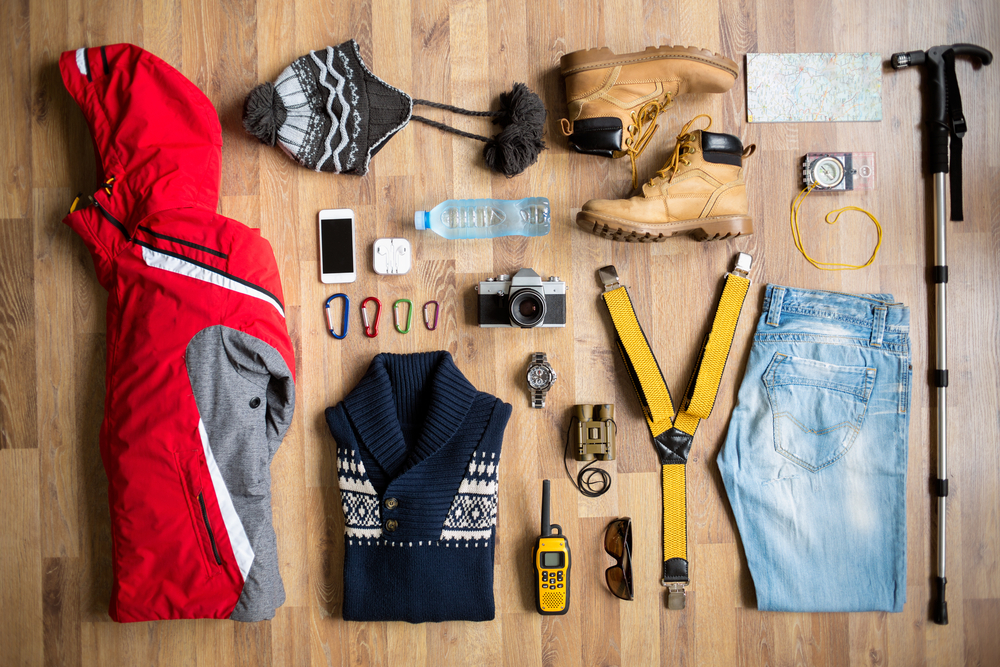
Clothing for Hiking
Functional hiking clothes satisfy specific needs. For instance shirts and pants with roomy pockets give you quick access to your compass, pocket knife, matches, and other gear. Clothes made of tough Fabrics protect you from thorns and heavy foliage. A long sleeve shirt with snug cuffs wards off mosquitoes and black flies. If you hike at night light-colored clothing, with reflective materials. makes you more visible to others in your family.
When it comes to clothing, look at the potential conditions of the WHOLE day. You may set out from home on a cool misty morning, then find yourself pounded by a broiling Sun at noon, and end up being in a drenching rainstorm later in the day. In addition to weather, you’ll also be at the mercy of insects, brambles, and brush. Prepare for any contingencies by dressing in clothing that is comfortable functional and versatile.
Be ready for the most extreme weather you expect to encounter by layering on lightweight shirts sweaters and jackets rather than a heavy all-or-nothing winter coat. With layers, you can put on and peel off just enough clothing to keep yourself warm and dry at any given moment.
A popular choice is to take two alternatives: a lightweight fleece top and a jacket, as well as a lightweight puffy coat that compresses nicely for inclusion in your daypack. Adjust as needed for your specific hiking conditions.
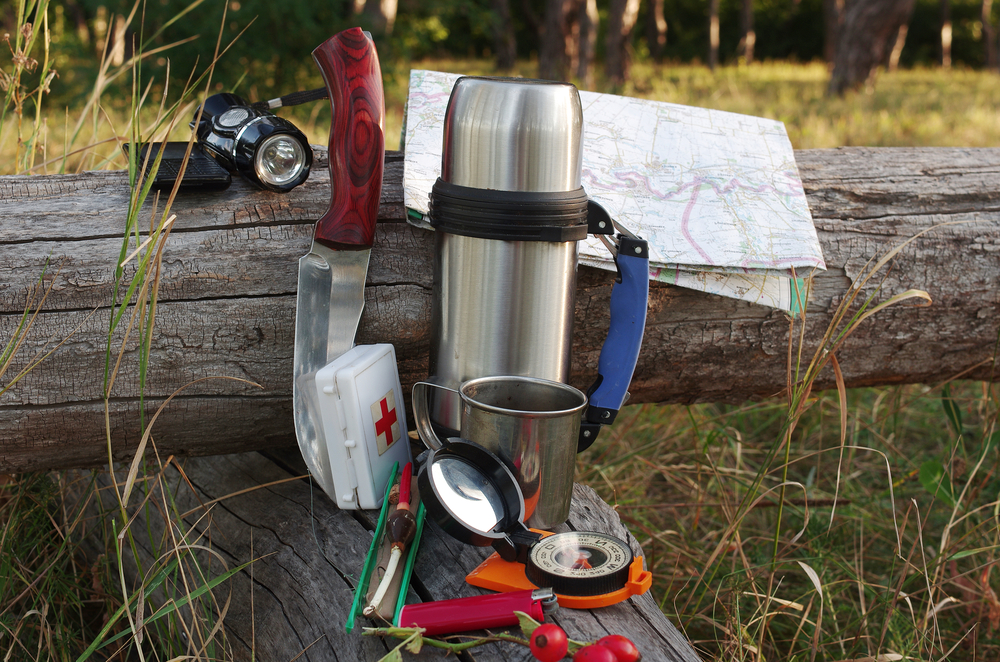
What should we take on a Hike?
On most hikes, you will want a small pack to store your food and gear. The equipment and supplies you put into your packs and pockets will vary depending on weather and terrain conditions. However, the following items are so useful you’ll probably want to consider them Essentials for every Backcountry Adventure:
- a full canteen or plastic water bottle (or sports drink)
- map
- compass/GPS
- pocket knife
- first aid kit
- flashlight
- matches in a waterproof case
- rain gear
- extra clothing (especially socks)
- watch
- food
- cup and spoon
- sunglasses
- insect repellent
- sunscreen
- toilet paper
- binoculars
- nature books
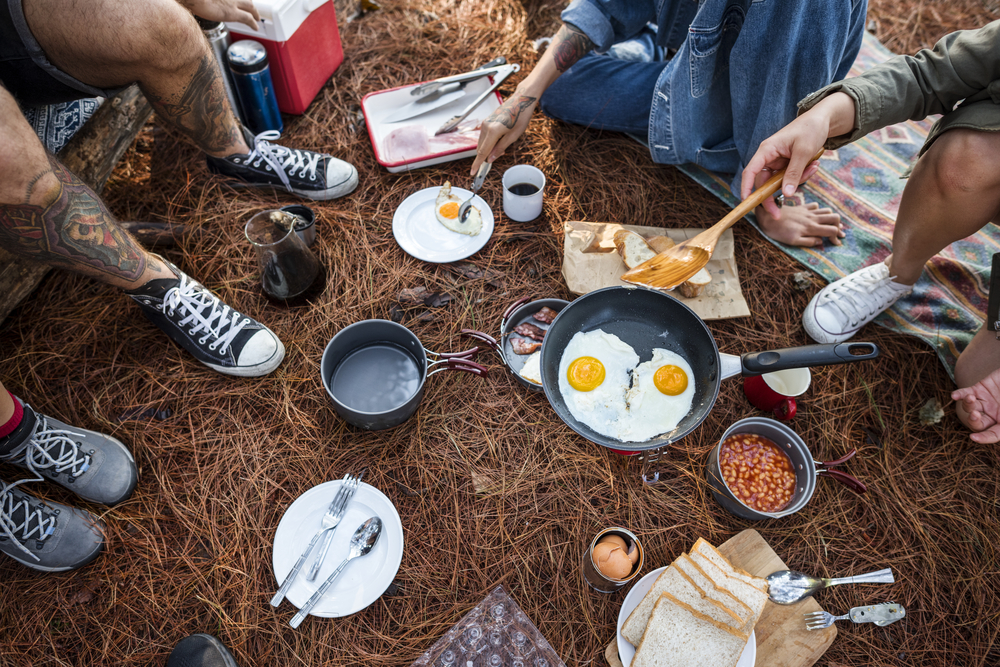
What To Eat When Hiking
On the day of a hike, the most important meal will be the one you eat before you hit the trail – breakfast. You’ll want to make sure you’re eating a good breakfast 1 to 3 hours before you start the hike. Lay a solid nutritional base for the day that will give you the fuel you’ll need for those first few miles. You’re looking for a combination of complex carbohydrates and lean protein.
Good picks would be a hot cereal (we like oatmeal) with some fruit (we like apples), or even whole wheat pancakes with eggs and sausage. Counting carbs shouldn’t be a concern for adults since you’re looking for the fuel that carbs can supply. And don’t worry about the calories those will burn off.
Carry a good lunch too. Sandwiches, fruit, crackers are all good choices. Peanut butter and jelly sandwiches are a classic and comforting hike favorite. If you’re going to be off the trail for a few hours at lunch, you can also bring a small stove and some soup or chili – take whatever you like as long it won’t spoil or get crushed in your pack.
Other options are a good trail mix with raisins, M&Ms, and nuts. Or even some hard candy. These will help to keep your energy up, your blood sugar even, and your appetite at bay.
Some hikers will stop for short breaks and nibble along the way. Others will stop for extended lunches at a scenic overlook. In fact, for some hikers, the lunch site is the destination. There are no hard and fast rules. Try a few different ways and see what is right for you. Listen to your body.
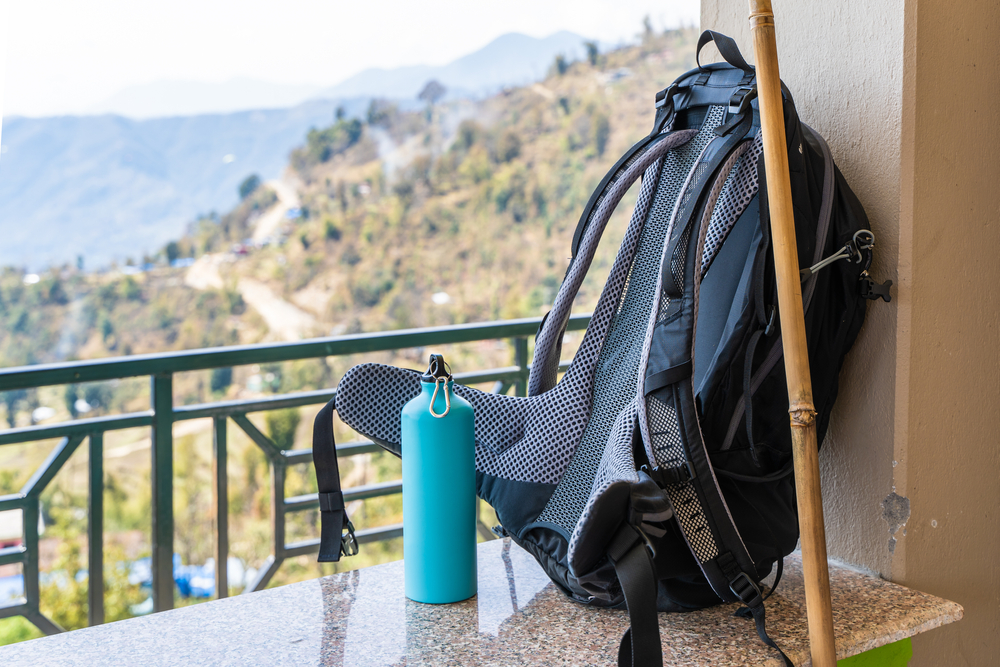
Staying Hydrated on a Hike
As a guide – you should drink one half to one quart of water every hour you’re hiking to replace fluids and minerals. Depending on the temperature and the degree of difficulty, you may need to drink more. To make sure you drink enough, alternate between plain water and a sports drink with electrolytes.
I can’t stress this enough. Staying hydrated while hiking is the most important safety tip there is. How much water you drink will depend on a few factors: the season, weather, where you’re hiking, terrain, availability of water along the way, and even the food you’re bringing with you.
Where fresh purified water is readily available you may need to carry nothing more than a cup while and dry hot territory a couple of canteens full of water may not be enough. As with food take a little more water than you think you’ll need and you’ll never find yourself unable to slake your thirst late in the day.
Sip a little water each hour during the hike especially in the winter when you may not feel thirsty even though you are sweating away body moisture. In addition to the sports drink, you may want to carry packets of beverage mix to stir into the water in your cup for a lunchtime treat. It’s best not to pour the powder directly into a canteen. Some mixes will corrode metal while others leave a long-lasting paste and plastic water bottles.
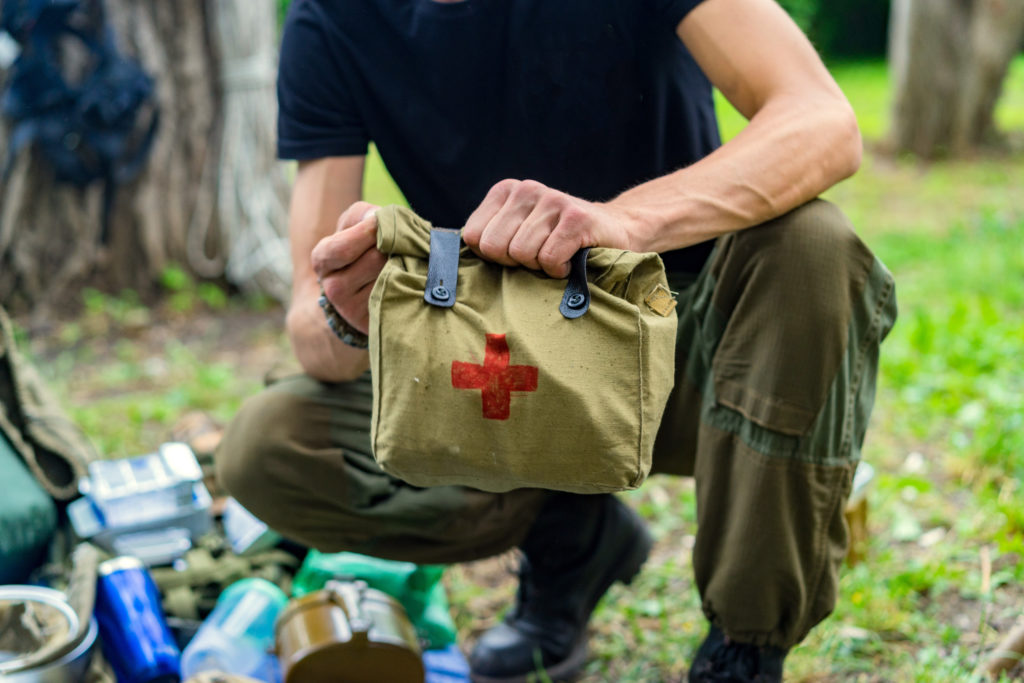
Hiking Safety
Hiker safety is a matter of foresight and good judgment. When you planned your trip well included responsible people in your group and left a trip plan with someone you can embark on an adventure confident you are prepared to handle any situation.
If an emergency does arise – hikers are injured for instance or become ill – stay calm and consider all courses of action. Then make good decisions. It may be necessary to go for help but always use your brain before you use your legs. Think first then act. Remember to stay Calm Cool and Collective.
Footcare For Hiking
Foot care is absolutely important for hiking. Guard your feet against blisters and watch for early signs of athlete’s foot, ingrown toenails, corns, and bunions. Footwear that is too tightly laced is a frequent cause of blisters. By keeping your feet clean and dry, trimming your toenails straight across, and wearing properly fitted shoes you can keep your feet healthy and yourself on the trail.
Traffic Safety While Hiking
Plan your hiking route to avoid busy highways. Use the sidewalk if there is one, and walk on the road only as a last resort—use a grass verge, sidewalk, or breakdown lane instead. When you must walk along with the road travel in single file on the shoulder facing oncoming traffic and be alert to the actions of drivers. This will both allow you to see and be seen by any traffic that is headed your way, thereby making it possible for you (or it) to avoid each other. Assume drivers cannot see you.
Wear light-colored clothing if you hike at night and if needed devise a makeshift reflector by tying a white handkerchief or other cloth around your leg or arm. Better yet pull on a reflective orange vest like those worn by hunters and Highway construction workers.
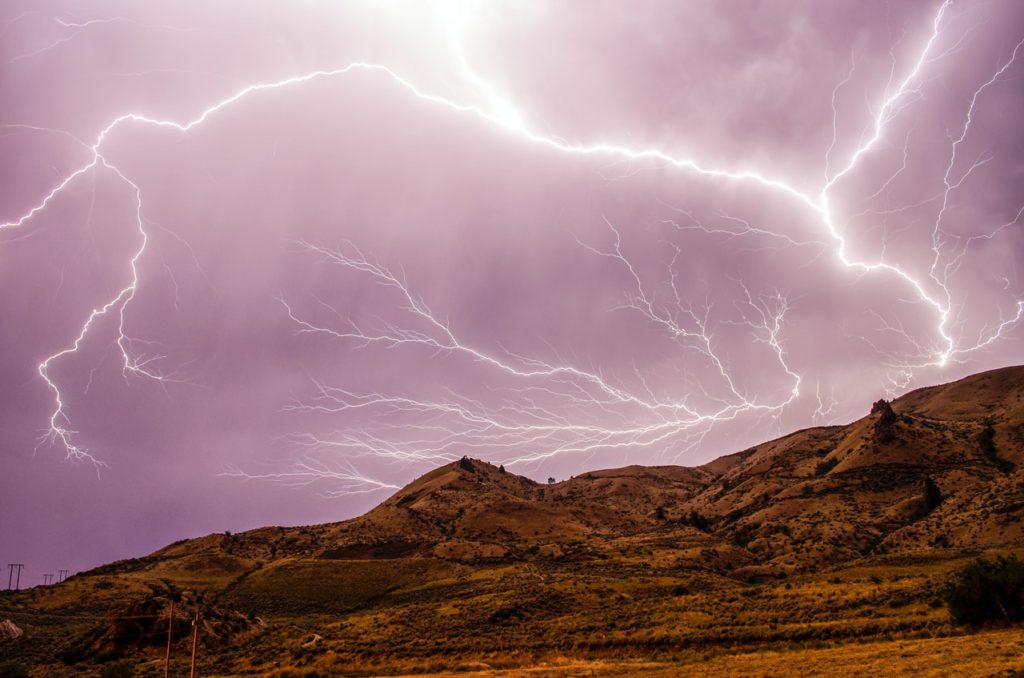
Lightning safety while hiking
Keep an eye on the clouds and you’ll know when a thunderstorm is rolling in when lightning crackles overhead seek shelter indoors. If suitable shelter isn’t nearby, seek protection in a valley or depression in the terrain. Always avoid isolated trees or other tall objects. Things to avoid while hiking in a lightning storm include telephone and electric lines, rock formations, high ridges, wire fences, large open fields, and lakes.
Hypothermia while hiking
In damp cool and windy weather a hiker may become so chilled that his body can no longer warm itself. This condition is known as hypothermia. Symptoms of hypothermia include shivering, stuttering over words, difficulty walking over easy terrain, and incoherence. Left untreated hypothermia can lead to unconsciousness and even death.
Yet hypothermia is easy to prevent.
The key is to stay dry and warm and eat plenty of high-energy foods. If a companion begins shivering or acting strangely warm them up quickly. When you aren’t equipped for the cold weather – stay home.
Getting Lost While Hiking
Should you become confused about where you are Don’t Panic. Even those experienced with the outdoors can get disoriented at times. The first thing you’ll want to do is stop. There’s no sense getting more lost while you’re not sure where you are.
Look around for landmarks that will indicate your location. Check your maps and GPS. In your mind, retrace your steps. Discuss the situation with your companions. If you still can’t make sense out of the surrounding terrain follow a trail or road to help. Don’t leave well-marked or well-worn trails. Heading downhill is usually better than heading uphill.
If you’re deep in the backcountry or in the wilderness make a brief controlled check of the immediate area. If that doesn’t give you any clues stay where you are then make yourself comfortable and remain calm. Searchers will find you in time.
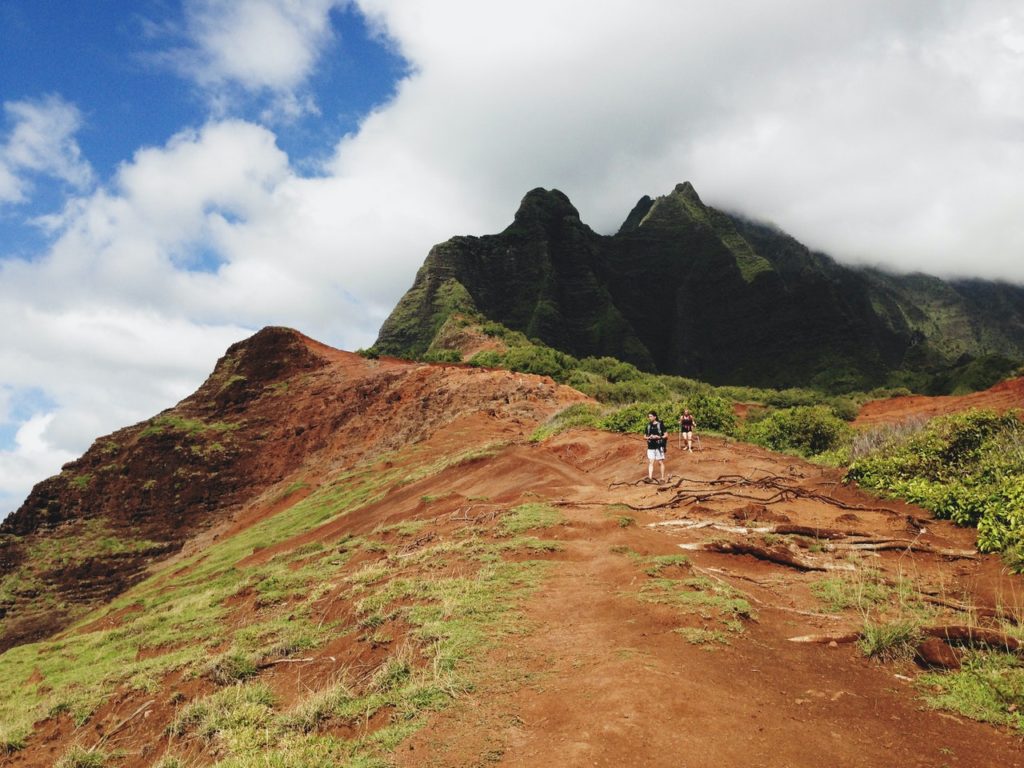
Rules of Trails While Hiking
The trail is a public way that has rules. You must follow them. There aren’t many of them, but they are important matters of Common Sense.
- If there is a registration box at the trailhead, then sign in. Officials of the organization in charge of the area will know where you’ve gone and they can use your registration information to better determine the needs of future hikers.
- Use switchbacks properly. Switchbacks are not for the convenience of hikers. They are used to prevent erosion and maintain the integrity of a trail. Do not cut switchbacks – ever! If hikers cut across switchbacks rather than staying on the pathway, their boots can loosen the earth, disturb vegetation and make it easier for rain and melting snow to wash away the soil.
- Be kind to the Countryside. Meadows and Alpine Tundra are fragile. Protect them by staying in the center of main trails by taking rest breaks in camping in the trees rather than on the clearance themselves. Try to hike only in places where the ground is hardened by previous use.
- Treat other hikers courteously. Many people enjoy hiking and in your travels, you will meet some of them. Most are friendly and in an emergency, you can count on them for help, but be polite. Step aside to let them pass. Respect their privacy and if you can find a hidden site away from other tents.
- Give livestock the right of way when hiking. Hikers and Horses aren’t equals on a trail. Hikers yield to horses as if they were cars or wagons – this means hikers step aside and let riders pass, making sure the animals don’t slip or stumble as they make their way down steep paths and rocky slopes. Horses and pack animals are sometimes nervous around strangers. When you meet riders on the trail, step at least 10 ft off the path on the downhill side and stand quietly while they passed. If the trail is too narrow for that, then ask the lead rider for instructions.
- Leave Gates the way you found them open or closed. Ranchers and Farmers grazing animals on the land through which you will hike will appreciate your thoughtfulness. If you open a gate, make sure it swings shut on its own and if not, then close it.
- Dogs are welcome but they must be under control at all times. It isn’t fair to other hikers to have animals running around off the leash while people are trying to hike in peace and quiet.
- Pick up litter. Unfortunately, there will always be a few careless users of the backcountry who Drop candy wrappers on the trail and leave food packets around campsites. Do the land and other hikers a favor and set a good example by packing out any Trash you find End by asking hikers you meet if they have litter you can carry to the trailhead for them.
Conclusion
While these tips are not meant to be exhaustive for everything you need to know about hiking, they are meant to be an introduction to the sport of hiking and the adventure it can hold. They will help get you ready and out on the trail feeling prepared and confident. Follow these tips, learn along the way, and you’ll be a world-class hiker in no time. For more tips, make sure to check out other articles on our site. Keep it here for related content and remember, when you get the chance, Grab Adventure.